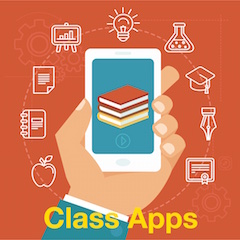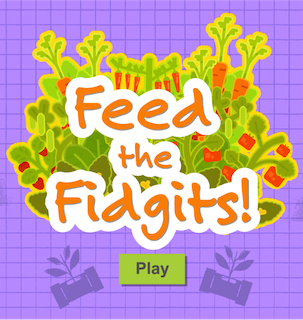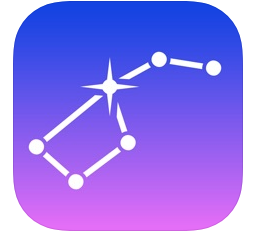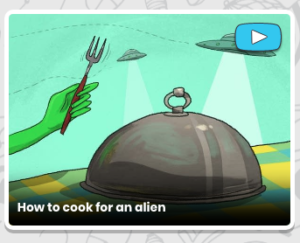Prep Your Students Now for STEM Summer Fun
A MiddleWeb Blog
 What if…
What if…
What if summer became a time for our students to invest in learning, rather than take a break from it?
The final bell of the year will soon begin ringing in some states. Whether school breaks for you in May or in June, there’s still time for science, math and STEM teachers to provide your students with encouragement, tools, and an expectation to play, explore, investigate, and discover the natural world.
Getting Dirty and Having Fun
There is no shortage of free, ready-to-go activities that will encourage students on summer break to roll up their sleeves, get messy, and sharpen their Science, Technology, Engineering & Mathematics skills.
► Students interested in the outdoors can start with this list of STEM activities for building solar cookers, making rock sculptures, and much more.
► For a bit more outdoor fun, students can try out this summer bucket list of STEM activities with everything from pool-noodle periscopes to waterwheels.
► Whether you are indoors or outdoors, SciencetoyMaker has all sorts of mysterious, kinetic, Do-It-Yourself STEM projects for enticing scientific investigation in young people. My favorite (shown in video below) is ‘air-surfing.’

► The Instructables site has a list of indoor/outdoor middle-school projects (ranging from no-tech to high-tech) that are loads of fun and happen to align to the Next Generation Science Standards and Common Core.
Exploring the World, Space, and Beyond
Albert Einstein once said, ‘Look deep into nature, and then you will better understand everything around you.’ Lucky for us, a variety of tools now exist for deepening our knowledge of planet Earth and the universe beyond.
Google Earth continues to add a number of play-worthy bells and whistles for students. Just recently, I came across the Voyager feature. It’s a list of interactive guided tours created by Google in partnership with National Geographic, PBS, and BBC Earth.
Students can explore a number of preloaded, geographic locations and features of historical and scientific significance. My favorite tool, however, is the ‘Layers’ feature within Voyager that allows kids to explore visual data layers dealing with plate tectonics, ocean depth, volcanoes, and sea surface temperature. All features are accessible on any device that runs Chrome or Android.

NASA’s Eyes is a tool for students to explore and experience Earth, the solar system, the universe, and the spacecraft exploring them on their mobile devices, Mac, and PC.
For those who want to take a closer look at the chemicals that make up everything around us, Compound Interest is a site worth checking out. It uses slick, easy-to-understand infographics for learning more about the chemical compounds we come across on a day-to-day basis.
Listening = Learning
For those who like to kick back, listen, and learn, a variety of podcasts are available for gleaning knowledge about science, technology, engineering, and mathematics.

Source: Brains On!
If something seems cool to adolescent minds, Brains On! probably has a podcast episode on it. This award-winning science podcast for kids does a great job at piquing student curiosity and awareness of the science behind flatulence, smelly feet, and flushing toilets, to cite just a few icky examples.
If you only have a minute to spare, 60-Second Science is a fun, quick way to get up to date on some of the most interesting developments in the world of science.
For older students, Science Friday provides 45 minute episodes consisting of brain fun for curious minds.
Science Underground is a two-minute podcast hosted by TED speaker and scientist Ainissa Ramirez who explains a scientific phenomenon in fun, understandable ways. Her podcast explores a range of topics—some that are pulled right from the headlines…many of which align with the NGSS. A few recent topics include the science of fireworks, how fireflies help light a path to new medicines, and how to build a transporter!
Though not an audio podcast, ScienceCast provides short, narrated videos of emerging problems and tools that NASA and the rest of the International Space Station are working on. The content, now several years old, is really cool, though the narration is sometimes a bit dry. See the sample below: Big Questions About Small Worlds. Click the YouTube link to access more of the videos.
For students who want to make their own podcasts, they can play around with tools like Vocaroo, SpeakPipe, Anchor or Twisted Wave. One of my favorites continues to be ChatterPix which allows students to create an original picture or face, and record audio to make their image talk.
Digital Makerspaces
One of the the most amazing aspects of technology is how accessible it makes engineering, design, and experimentation. Online simulations, experiments, and makerspaces allow students to formulate and test hypotheses and put ideas into action.
Algodoo is a unique, cartoony, 2D-simulation program that allows students to play with physics, build inventions, and design games or experiments from home.
Gizmos is another tool for getting students exploring Math and Science. Teachers can sign up for the free version and grant their students access to 20-40 online Gizmos, or online simulations.
Phet provides an enormous treasure trove of free science and that simulations. If your device can handle Java, there are dozens of activities that can be done online that would normally take an enormous amount of money, set-up time, and lab equipment.
Video Production for Students
Recent learning research indicates that videos are by far one of the most popular media forms for our students in their spare time. But video can also serve as a useful medium for students to engage in STEM projects that showcase what they are learning as they combine a variety of media types to convey ideas.
My new favorite video creation app for students for converting ideas, art, songs, etc. into a movie is VideoShop. It’s available for both iOS and Android devices and allows even the most inexperienced individual to blend images, video clips, music, and recorded narration. Students can also create captions and apply basic filters.
Mostly, you can download the app and point the kid to it. Here is a quick sample my 7th grade son put together that combines some flip-book style sketches with a hip-hop/country version of the quadratic formula.
Adobe Spark is another way for students to create informative movies, infographics, reports, and presentations in a relatively short amount of time. It offers customizable themes, templates, fonts, and recordable narration.
The End of a School Year…the Beginning of Learning!
The school doors will soon close, but the gateway to summer fun is just about to open. Summer break provides a wonderful opportunity for students to get their hands dirty and their creativity flowing.
Though students (and even teachers) may be counting down the days, a bit of STEM fun can help ensure our kiddos never stop learning, exploring, and developing their skills and thinking.





























Great summer ideas – and ideas for parents to continue STEM education at home through the entire school year! Thanks, Curtis!